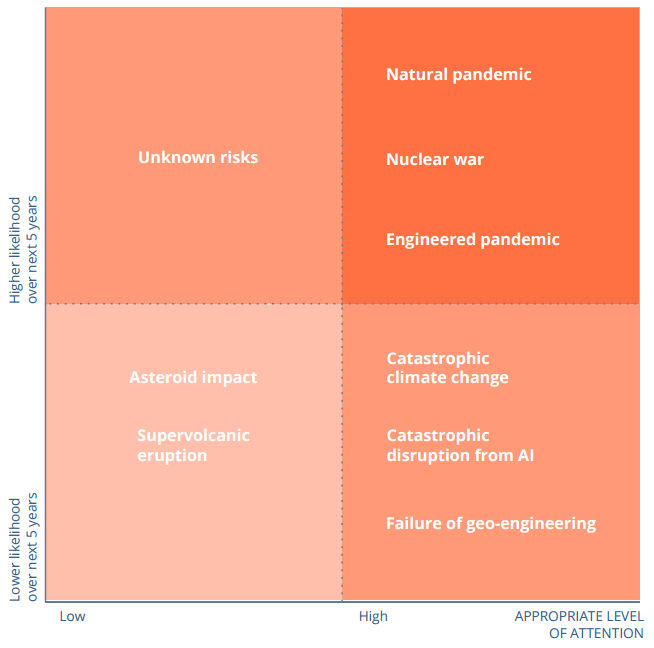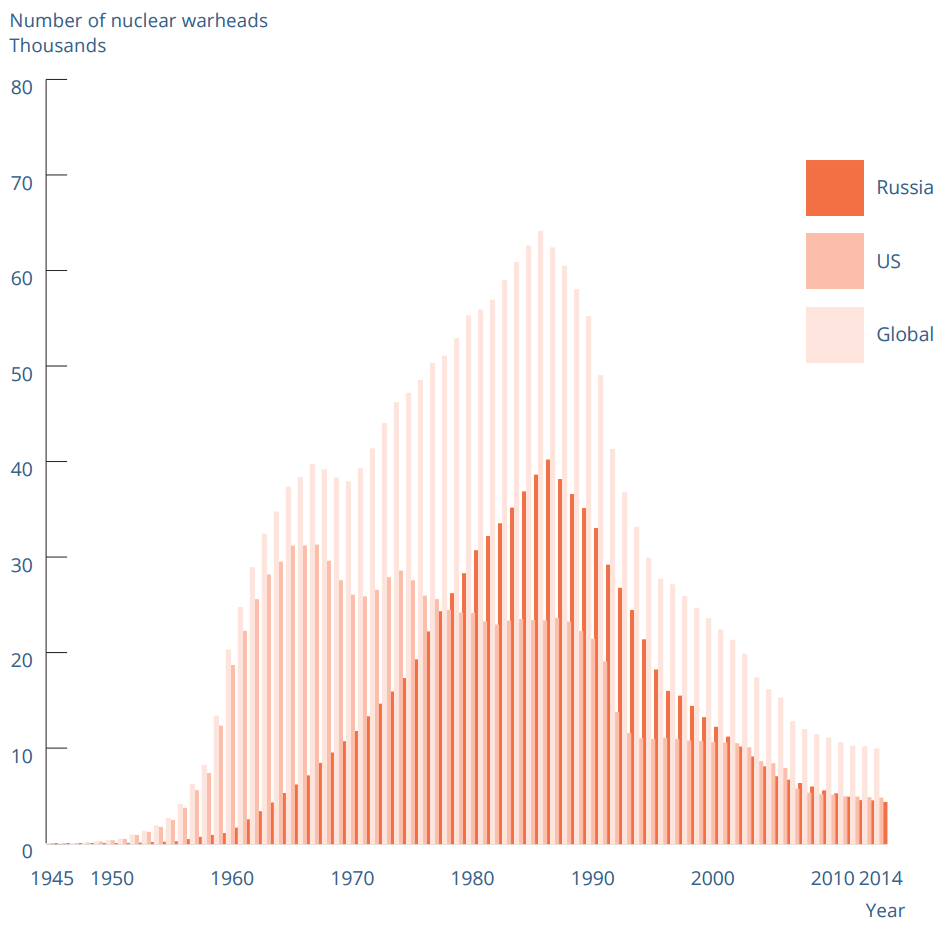The probability of extinction of humanity was estimated at 0.1% per year
For an ordinary person, the probability of dying in a global catastrophe is several times higher than in an accident
 Nuclear war. Changing of the climate. Pandemics of deadly viruses. These are the most likely threats to global human civilization. According to such plots they make films-catastrophes, blockbusters and horror films, but unlike zombies or sea monsters, this is not fiction, but real threats to our mind - what needs to be taken into account when making long-term plans.
Nuclear war. Changing of the climate. Pandemics of deadly viruses. These are the most likely threats to global human civilization. According to such plots they make films-catastrophes, blockbusters and horror films, but unlike zombies or sea monsters, this is not fiction, but real threats to our mind - what needs to be taken into account when making long-term plans.And if you believe the latest analytical report of the British organization Global Challenges Foundation , these threats are much more likely than we think.
In its latest report, the organization estimated the probability of dying after the extinction of humanity is five times higher than from a car accident. Other independent analysts agree with this assessment. For example, in a Stern Review report compiled at the request of the British government, the risk of global extinction is estimated at 0.1% annually. This is a very big number.
If we compare this figure with the chances of dying in a car accident , it turns out that we are in vain afraid of car accidents. For example, in the USA, 9395 people died during the year in autocast. It turns out that over the course of a century of life, the average American’s probability of dying in an accident is less than 1%.
')
At the same time, the Global Challenges Foundation estimates humankind’s chances of survival over the next century at just 90.5% - almost like in Russian roulette (there are 5 out of 6, in the classic version). That is, the threat of a global catastrophe is 9.5%. This is about 10 times more than the chances of dying in an accident.

Some experts believe that the estimate of the probability of mass extinction of 9.5% or 10% seems to be underestimated, since not all possible threats are assessed. It is not entirely clear how to assess the risks of a supervolcano eruption or a large asteroid hitting the Earth, with the result that the global climate will change in the same way as in the case of a nuclear winter . And how many more events about which we simply do not know until they come ?

“We do not expect any of these events to occur at any of the 10-year intervals. They can happen, but they probably won't happen, ”says Sebastian Farquhar, director of the Global Challenges Foundation. He cites the example of airbags and seat belts in a car. They must be in working condition, although the probability of getting into an accident is very low. In the same way, we must take into account and prepare for the risks of mass extinction of humanity.
The threat of nuclear war is considered to be the most dangerous threat. There have been several cases in history when world leaders were one step away from launching ballistic missiles with nuclear charges into enemy territory, which would have caused an inevitable retaliatory strike.

Climate change has unpredictable consequences. Some serious scientists believe that further heating of the atmosphere with increasing levels of greenhouse gases will create an ideal continental storm until the end of the century. Even the most optimistic estimates look scary. According to the UN, the risk of increasing the average temperature by 6-10 ° C is more than 3%, even if humanity quickly and sharply reduces the amount of carbon dioxide emissions. Well, if you count on a realistic scenario, then this probability increases to 10%.
The third most likely threat is a global pandemic. Over the past two thousand years, there have been two pandemics of plague of considerable scale: in the 1340s, more than 10% of humanity died from the black death , and 540-542 justustinian plague killed 13-17% of the world's population.
The Global Challenges Foundation report examines the risks of extinction from other threats: the pandemic of a genetically modified virus, geoengineering, hostile Artificial Intelligence. Unlike nuclear war and global warming, they are rated as “imaginary threats”, although the report’s authors warned that many modern risks were also difficult to imagine several decades ago and they were rated as imaginary threats.
What should mankind do to increase the likelihood of survival? Experts believe that for every threat there are specific measures, such as reducing carbon emissions and reducing nuclear weapons. But globally, a sharp increase in food production would be very useful. If such a technology is invented, rich stocks of food will greatly increase the chances of survival in a nuclear winter or a global catastrophe such as an eruption of a supervolcano or an asteroid.
In addition, it would be useful to establish on Earth something like a committee representing the interests of future generations.
The report was compiled by experts from the Center for Effective Altruism (London) and the Institute for the Future of Humanity at Oxford University, it is published in the public domain .
Source: https://habr.com/ru/post/393513/
All Articles